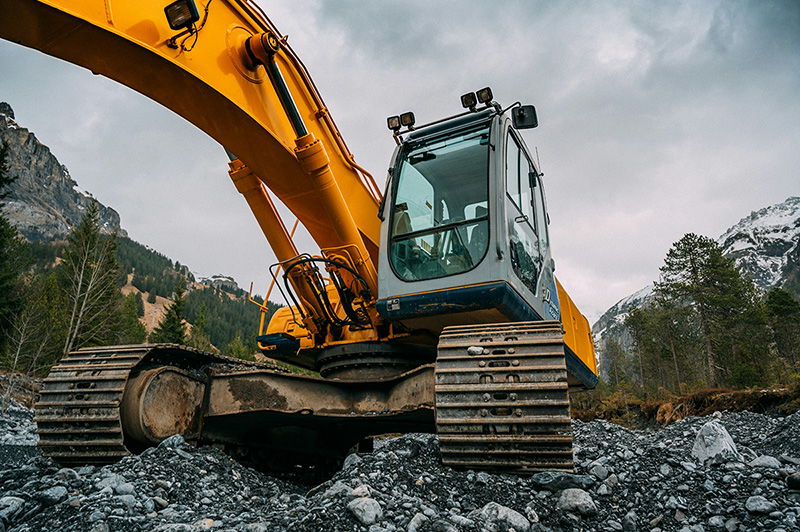
When it comes to hydraulic systems, choosing the right coupling is essential to ensure reliability, efficiency, and ease of maintenance. Lock-on and threaded connections are two of the most commonly used options. But how do you decide which one is best for your application? In this blog, we’ll compare these two connection types to help you make an informed choice.
What Are Lock-On Fittings?
Lock-on fittings are designed for low-pressure hydraulic applications and work in conjunction with hoses specifically made for lock-on connections. These fittings rely on a barbed or serrated end that grips the hose securely when pushed into place, eliminating the need for crimping or specialized tools.
Advantages of Lock-On Fittings
-
Ease of Use: No crimping tools are required, making installation and maintenance quick and straightforward.
-
Time-Saving: Ideal for applications where frequent hose replacement is necessary.
-
Flexible Application: Suitable for low-pressure fluid transfer and air systems.
-
Cost-Effective: Reduces installation complexity and labor costs.
Ideal Applications
Lock-on fittings are commonly used in:
-
Mobile and industrial equipment with low-pressure hydraulic lines
-
Industrial fluid and air transfer applications
-
Lubrication and fuel systems
Use Case: Quick Hose Replacement in Low-Pressure Systems
Imagine a scenario where a maintenance team at a manufacturing plant needs to replace a hydraulic return line in a low-pressure system. Using lock-on fittings, the technician can quickly remove the old hose and install a new one without the need for crimping tools, minimizing downtime and ensuring continuous operation.
What Are Threaded Connections?
Threaded connections use a screw-type mechanism to secure the fitting to a hydraulic hose or component. These connections are widely used in high-pressure applications due to their strength and durability.
Advantages of Threaded Connections
-
Handles High Pressure: Suitable for high-pressure hydraulic systems.
-
Reliable and Secure: Less likely to disconnect accidentally under stress or vibration.
-
Versatile Compatibility: Available in various thread types, such as NPT, BSP, JIC, and ORFS, to fit different applications.
-
Long-Term Durability: Provides a strong and leak-resistant connection when properly installed.
Ideal Applications
Threaded connections are best suited for:
-
Heavy-duty construction and agricultural equipment
-
Oil and gas applications
-
High-pressure hydraulic and pneumatic systems
Use Case: High-Pressure Hydraulic System in Construction Equipment
Consider a hydraulic excavator working on a rugged construction site. The hydraulic system operates under extreme pressure and vibration, requiring fittings that can withstand these conditions without leaking or loosening. Threaded connections ensure the hydraulic lines remain secure, preventing costly downtime and equipment failure.
Key Differences Between Lock-On and Threaded Connections
| Feature | Lock-On | Threaded Connections |
| Ease of installation | Quick and tool-free | Requires tools and precision |
| Pressure handling | Medium to low pressure | High pressure |
| Maintenance | Minimal downtime | May require longer downtime |
| Leak prevention | Integrated seals | Reliable with proper threading |
| Cost | Generally higher initial cost | Lower upfront cost |
How to Choose the Right Hydraulic Coupling
When selecting between lock-on and threaded connections, consider the following factors:
-
Operating Pressure: High-pressure systems require the robustness of threaded connections, while low-pressure applications can utilize lock-on fittings.
-
Frequency of Connection/Disconnection: For frequent hose replacements, lock-on fittings provide unmatched convenience.
-
Environment: If your equipment operates in harsh or high-vibration conditions, threaded connections provide extra security.
-
Maintenance Requirements: Lock-on fittings are easier to replace, making them ideal for systems that require quick repairs.
-
Budget: Consider both initial installation costs and long-term maintenance expenses.
Choosing between lock-on and threaded hydraulic couplings depends on your specific needs. Lock-on fittings offer convenience and quick maintenance for low-pressure applications, while threaded connections provide durability and strength for high-pressure environments.
At Royal Brass and Hose, we offer a wide range of hydraulic couplings to suit every application. Contact us today to learn more or browse our inventory to find the perfect coupling for your hydraulic system.
Need Help Deciding?
Our team of experts is here to help. Reach out to Royal Brass and Hose or visit one of our locations for personalized advice and recommendations tailored to your hydraulic system needs.
